2003 Toyota Sequoia Repair, Service & Tires
Get Started
Complete Auto Care for Your 2003 Toyota Sequoia
-
TIRES FOR YOUR 2003 Toyota Sequoia View Tire Info GET TIRE PRICING
-
REPAIR FOR YOUR 2003 Toyota Sequoia View Repair Info SCHEDULE REPAIR
-
MAINTENANCE FOR YOUR 2003 Toyota Sequoia View Maintenance Info SCHEDULE MAINTENANCE
-
OFFERS FOR YOUR 2003 Toyota Sequoia Limited Time Tire Offers VIEW ALL COUPONS
2003 Toyota Sequoia Tires
Recommended Tires | Tire Information
2003 Toyota Sequoia Tires Sizes, Speed Ratings, and Inflation
Not sure about your 2003 Toyota Sequoia tire size? Use the following chart to find information on tire size, speed rating, and inflation.
| Trim Level | Speed Rating | Inflation in PSI F/R | Tire Size |
|---|---|---|---|
| 2003 Toyota Sequoia Limited* | S | 32 PSI/32 PSI | P265/65R17 |
| 2003 Toyota Sequoia Limited* | S | 32 PSI/32 PSI | P265/70R17 |
| 2003 Toyota Sequoia SR5* | S | 32 PSI/32 PSI | P265/70R16 |
| 2003 Toyota Sequoia SR5* | S | 32 PSI/35 PSI | P245/70R16 |
| 2003 Toyota Sequoia SR5* | S | 32 PSI/32 PSI | P265/65R17 |
| 2003 Toyota Sequoia SR5* | S | 32 PSI/32 PSI | P265/70R16 |
|
2003 Toyota Sequoia Limited* Speed Rating: S Inflation F/R: 32 PSI/32 PSI |
|
2003 Toyota Sequoia Limited* Speed Rating: S Inflation F/R: 32 PSI/32 PSI |
|
2003 Toyota Sequoia SR5* Speed Rating: S Inflation F/R: 32 PSI/32 PSI |
|
2003 Toyota Sequoia SR5* Speed Rating: S Inflation F/R: 32 PSI/35 PSI |
|
2003 Toyota Sequoia SR5* Speed Rating: S Inflation F/R: 32 PSI/32 PSI |
|
2003 Toyota Sequoia SR5* Speed Rating: S Inflation F/R: 32 PSI/32 PSI |
* Note: these models have different tire sizes depending on vehicle options.
Recommended Tires for Your 2003 Toyota Sequoia
What tires are best for a 2003 Toyota Sequoia? Check out the following tire brands and types.
 Blizzak DM-V2
Blizzak DM-V2
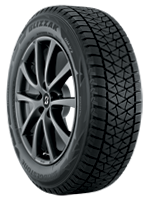
- No warranty
- Winter
- Winter
 ALENZA AS ULTRA
ALENZA AS ULTRA
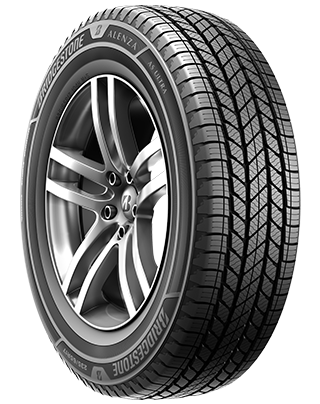
- No warranty
- All-Season
- Light Truck Tires
 Dueler A/T Revo 3
Dueler A/T Revo 3
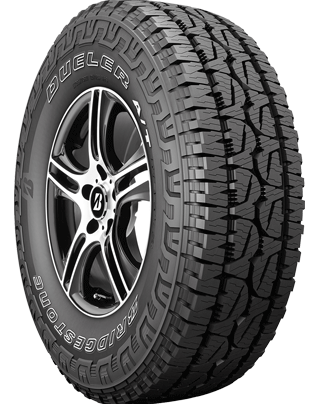
- Platinum Pact Limited Warranty
- All-Season
- Light Truck Tires
 Dueler H/T 684 II
Dueler H/T 684 II
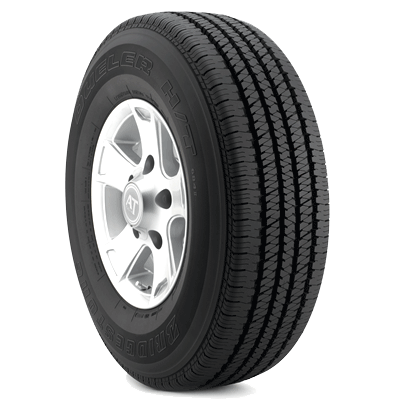
- Platinum Pact Limited Warranty
- All-Season
- Light Truck Tires
 Dueler A/T Revo 3 - LT
Dueler A/T Revo 3 - LT
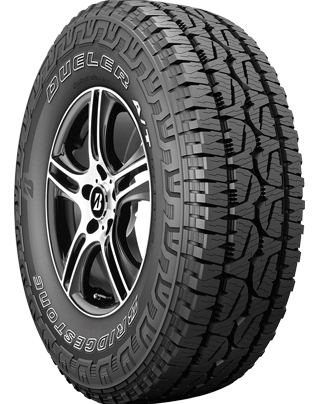
- Platinum Pact Limited Warranty
- All-Season
- Light Truck Tires
 Dueler A/T RH-S
Dueler A/T RH-S
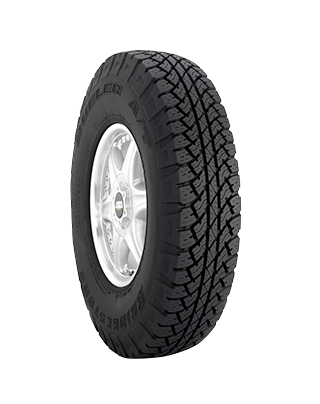
- Platinum Pact Limited Warranty
- All-Season
- Light Truck Tires
 Destination A/T2
Destination A/T2
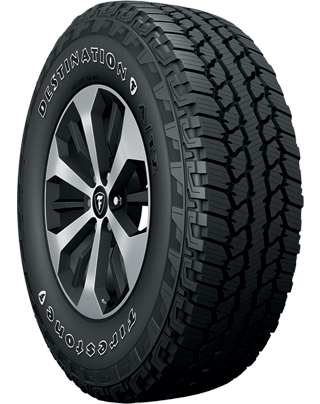
- Gold Pledge Limited Warranty
- All-Season
- Light Truck Tires
 Destination LE3
Destination LE3
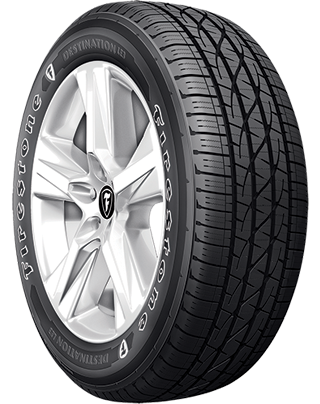
- No warranty
- All-Season
- Light Truck Tires
 Winterforce 2 UV
Winterforce 2 UV
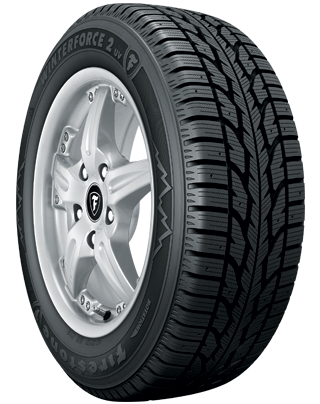
- No warranty
- Winter
- Winter
 Destination X/T
Destination X/T
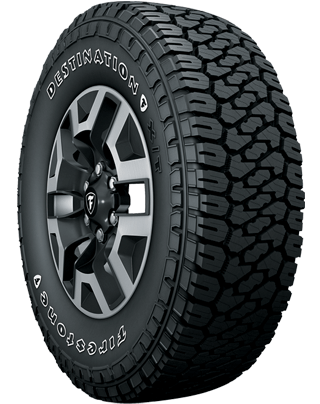
- Gold Pledge Limited Warranty
- All-Season
- Light Truck Tires
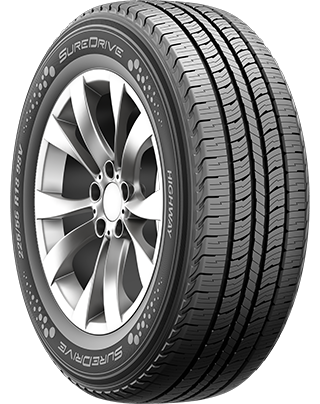
- No warranty
- All-Season
- Light Truck Tires
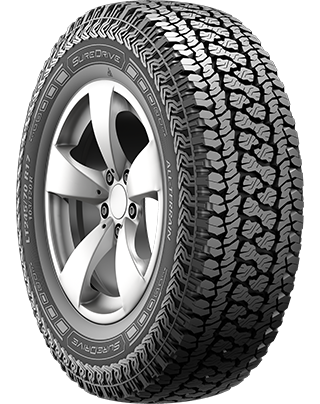
- No warranty
- All-Season
- Light Truck Tires
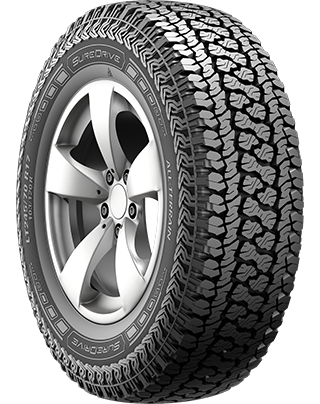
- No warranty
- All-Season
- Light Truck Tires
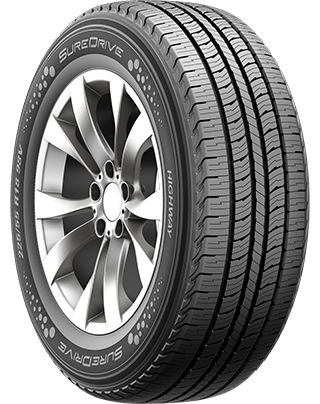
- No warranty
- All-Season
- Light Truck Tires
 OPEN COUNTRY A/T III
OPEN COUNTRY A/T III
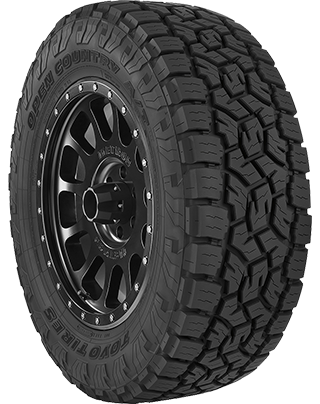
- No warranty
- All-Season
- Light Truck Tires
 OPEN COUNTRY HTII
OPEN COUNTRY HTII
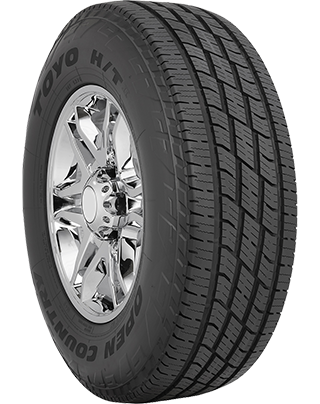
- No warranty
- All-Season
- Light Truck Tires
About 2003 Toyota Sequoia Tires
Apart from finding the right tire size, there are a couple of other factors to consider when buying Toyota Sequoia tires like where and how you drive, and what tire brand you trust most. When evaluating your driving conditions, think about where you live (countryside vs. city vs. mountains) and the kind of unexpected weather you're likely to experience. Many drivers who live in states that experience all four seasons choose to purchase two sets of tires: one for summer and one for winter. Other drivers buy one set of all-season tires instead. That way they don't have to return to the tire shop and their vehicle is always ready for sun, rain, and light snow!
Driving style is next on the list to think about when buying tires. If you're a diehard off-roader, you have very different tire needs than a highway commuter who doesn't leave the paved path. Visit your local Firestone Complete Auto Care for help selecting the tire that's right for you, or get started by browsing tires that fit your Toyota Sequoia.
Toyota Sequoia Installation and More
Firestone Complete Auto Care installs more tires on more cars than most other companies. We're your one-stop shop for tire installation, rotation, and ongoing maintenance! Shop 2003 Toyota Sequoia tires online and schedule an installation appointment.
Questions About 2003 Toyota Sequoia Tires
-
Why check Toyota tire inflation? A small decrease in tire pressure can have a big impact on your driving. Maintaining proper tire pressure can help improve braking time, increase fuel economy, and boost tire lifespan.
-
Why are there numbers on the side of my Toyota Sequoia tires? Your tire sidewall gives you information about load carrying capacity, speed rating, treadwear, traction, and tire size. Talk to one of our tire technicians to learn how to read the numbers on your tire!
-
Can I check the tread depth on my Toyota tires at home? Stay on top of your tire tread depth to help avoid a dangerous drive. You can check tread depth with a penny. Hold the penny so that Abraham Lincoln is facing you, then place your penny into a tread groove upside down. If you can see the top of Abe’s head, your tread is shallow and it might be time for new Toyota Sequoia tires. Grab a penny. Hold the so that Abe Lincon's head is facing you and his hair is pointing toward the ground. Then, place the penny into a tread groove. If you can see the top of Abe’s head, your tread is shallow and it might be time for new Toyota Sequoia tires.
Types of 2003 Toyota Sequoia Repairs
When to repair, when to replace? Click on a repair below to learn more about Toyota Sequoia repairs at Firestone Complete Auto Care.
About 2003 Toyota Sequoia Repairs
For most drivers, the words “car repair” don’t exactly spark excitement. But at Firestone Complete Auto Care, we strive to give you the excellent repair experience you deserve. When you come to us for 2003 Toyota Sequoia repair services, our technicians will take care of your Sequoia like it was their own. We’ll start by assessing what repairs may be needed, and we’ll provide you with a detailed explanation of what we recommend. If a repair isn't necessary, we won't recommend it.
How Much Does Toyota Sequoia Repair Cost?
Several factors can affect the cost to repair your 2003 Toyota Sequoia, including what kind of repair you need, the cost of any replacement parts, how much labor the repair will take, and the state you live in. They're updated regularly!
A few different aspects can influence repair costs for your 2003 Toyota Sequoia, like
2003 Toyota Sequoia Auto Repair Questions
-
Can scheduled maintenance help me avoid repairs? One of the best ways to prevent 2003 Toyota Sequoia repairs is by staying on top of your Toyota maintenance schedule. This schedule is written by the people who made your vehicle and they know best how to keep it running smoothly.
-
Should I bring my Toyota in even if I can't pinpoint the problem? No, we’re not talking about finding the best jams on the radio! You know your car best, and you’re the first person who will notice if something doesn’t feel right (like new smells, sights, or sounds coming from your car). If you sense that something is 'off,' stop in for a Courtesy Check to have these symptoms checked out ASAP. Early action could help you prevent Toyota Sequoia repairs.
-
Are the repairs you recommend for my Toyota actually needed? Talk to your technician. We'll never recommend a service or repair for your 2003 Toyota Sequoia that we don't think is necessary for your safety.
Get Your 2003 Toyota Sequoia Brakes Fixed
Your Toyota Sequoia engine may be strong and reliable. But if you can’t stop it, it’s as good as scrap metal. If you’re experiencing squeaky brakes or a loss of braking power, don’t wait! Safe driving and responsive brakes go hand in hand. What's more, waiting for things to figure themselves out can result in more damage to your brakes and your wallet. Go to your local Firestone Complete Auto Care for 2003 Toyota Sequoia brake repairs. We offer a variety of brake services like brake pad/shoe replacement, brake rotor/drum refinishing, brake fluid exchange/bleeding, and wheel cylinder and brake caliper installation.
Toyota Sequoia Brakes Questions
-
Why is my Sequoia shaking as I brake? Feeling shaking or vibrating in your Sequoia as you brake might indicate a few different problems, including worn brake pads or rotors, loose suspension components, damaged brake calipers, or warped rotors. Book an appointment for a free brake inspection as soon as you notice a problem with your brakes.
-
How long can I expect my Sequoia brake pads to last? Brake pads typically last about 30,000 to 40,000 miles. However, driving conditions can affect this range. Sticking to highway driving and braking smoothly can help extend the life of your brake pads, while towing heavy loads or frequently riding your brakes can shorten it.
-
Should my Sequoia be leaking brake fluid when the car is off? Your Sequoia brake system is a closed hydraulic system, which means that the brake fluid should not leak out of the system under normal circumstances. However, over time, the various components of the brake system can wear out or become damaged, which can cause brake fluid to leak out of the system.
Repairing Your Toyota Sequoia Drivetrain
Drivetrains for front, rear, and all-wheel-drive and 4WD vehicles are not all the same. You don't want to go to any random shop for drivetrain repair. You want to visit Firestone Complete Auto Care. We can help repair all of your 2003 Toyota Sequoia drivetrain components Your Toyota Sequoia may need driveshaft attention if you feel clunks when shifting, vibration as your vehicle accelerates, resistance when turning, or heavy vibrations in your floorboards.
Questions About 2003 Toyota Sequoia
-
What are signs my Toyota drivetrain is damaged? Your Toyota Sequoia drivetrain might be damaged if you notice strange noises from the rear of your vehicle, see fluid leaking, or have issues turning.
-
What causes a Sequoia’s malfunction indicator light (MIL) to illuminate? If your Sequoia has its malfunction warning light (more commonly called the check engine light) illuminated, it could indicate engine troubles, problems with the transmission, electrical issues, malfunctioning sensors, connector problems, or misfire issues.
-
Is a drivetrain malfunction in my Sequoia serious? A drivetrain malfunction in your Sequoia should never be taken lightly. Driving with a malfunctioning drivetrain can put you in danger and lead to further vehicle damage, so it's essential to have a qualified mechanic assess and repair the problem as soon as possible.
Wheel Alignment for 2003 Toyota Sequoia
An alignment involves making adjustments to your Toyota Sequoia's suspension system, which serves to attach your wheels to your vehicle. In an alignment service, the individual angles of your tires are adjusted so that they come into contact with the road in just the right way — the way Toyota intended them to. Bring your 2003 Toyota Sequoia in for a wheel alignment and we'll start with an alignment check. After that, we can adjust your wheel alignment angles until they match Toyota’s recommended measurements.
Toyota Sequoia Alignment Questions
-
What can knock my Toyota Sequoia out of alignment? Hitting a pothole or curb can alter your wheel alignment. So can general wear and tear over time.
-
How often should you get a wheel alignment for your Sequoia? Typically, your alignment should be checked every 6,000 miles or 6 months, whichever comes first. Double-check your Sequoia owner’s manual for Toyota's exact recommended schedule.
-
Do you need to get your Sequoia wheels aligned when you get new tires? While you don’t necessarily need to get an alignment when putting new tires on your Sequoia, it’s still a good idea. Ensuring your wheels are properly aligned can help support optimal handling, tire wear, and fuel efficiency.
Engine Repairs for Your 2003 Toyota Sequoia
If your 2003 Sequoia engine needs repairs, our technicians will provide you with a thorough explanation beforehand. We don't start working until we have your approval. If a repair can wait, we'll let you know. But if immediate repairs are necessary for your safety, we’ll make sure that's clear, too. We seek to give you all the info you need to make a smart decision about our services. Choose Firestone Complete Auto Care for Toyota Sequoia engine repairs and you can feel confident knowing that we use Toyota-approved parts and components like the serpentine belt, oil gasket, sensors, or a different component.
Questions About 2003 Toyota Sequoia Engines
-
Why does my Sequoia’s check engine light come on when I start it? Generally, your check engine light turning on upon ignition is not a bad thing. It’s just your Sequoia firing up its circuits. The light should turn off in a bit, but come see us if it doesn't.
-
Why is my Toyota Sequoia making engine noise? Strange engine sounds can be a sign something’s off in your Toyota Sequoia. Knocking or tapping could be a symptom of low oil. A high-pitched whistle could signal an intake leak or misaligned belt. Squealing can be traced back to a loose fan belt, and grinding might be a sign of brake problems rather than engine issues.
-
What could damage my Toyota Sequoia engine? Some driving habits are not so great for your engine. These include driving on a near-empty gas tank, flooring the gas pedal while the car is in Park, or accelerating too quickly, too soon. Protect your engine’s performance and efficiency by distancing yourself from these habits.
2003 Toyota Sequoia Tire Repair
If the road has been rough on your 2003 Toyota Sequoia tires, Firestone Complete Auto Care can help. In some cases, a tire doesn’t have to be replaced – it can be plugged and patched with a simple repair. Depending on the damage, though, a repair might not be the right move. Our technicians can determine which option is best for your situation. We'll start by evaluating the state of wear, the location of damage, type of damage, and the size of the damage.
If a repair on your 2003 Toyota Sequoia tire is feasible and safe, we’ll get to work on the steps to fix it: (1) Remove the tire from the wheel for inspection and repair, (2) use a filler to close up the puncture (this is to keep moisture from getting in), and (3) re-seal the inside lining of your tire so that air won’t escape.
Toyota Sequoia Tire Repair Questions
-
What happens if I drive my Toyota on a flat tire? Driving on a flat or underinflated tire can put extra stress on your wheels and alignment. While it’s sometimes necessary to drive a short distance on a flat tire to get to a safe place, don’t take any other trips in your Sequoia until you can have the flat tire repaired or replaced.
-
Is temporary sealant bad for my Toyota's tires? Fast fixes are a mixed blessing. They’ll help you get your Toyota Sequoia to Firestone Complete Auto Care, but don’t count on them to keep you on the road for very long. Using a temporary sealant may also void a Bridgestone or Firestone tire warranty.
-
Why do the tires on my Sequoia keep losing air? If your Sequoia tires are always losing air, you may have a puncture, damaged wheel, or leaking valve stem.
2003 Toyota Sequoia Maintenance
When it comes to your Toyota Sequoia, how you treat your car makes all the difference in its performance. With proactive maintenance, your Sequoia could be on the road well past the 200,000 mile mark.
About 2003 Toyota Sequoia Scheduled Maintenance
Instead of waiting for an issue to arise with your Sequoia, you can stay ahead of problems before they even begin. Rely on the recommended maintenance schedule that’s been created just for your 2003 Toyota Sequoia! The recommended maintenance schedule is put together by Toyota, your vehicle manufacturer. Scheduled maintenance services can vary depending on driving conditions, climate, and other factors; however, recommended maintenance usually includes services like oil changes, tire rotations, brake pad replacement, filter changes, and fluid checks and exchanges. Keeping up with routine service appointments is a great way to keep your Sequoia running for longer, keep you safer on the road, and maybe even save you the headache of dealing with common 2003 Toyota Sequoia problems in the future.
Essential Maintenance to Keep Your 2003 Toyota Sequoia Running Newer, Longer
Head to your nearest Firestone Complete Auto Care in your 2003 Toyota Sequoia for factory-recommended routine maintenance and a skilled technician will start the appointment with a Courtesy Check. The Courtesy Check helps us see what we’re working with under the hood, and allows us to alert you to any potential problems before they worsen. Each Courtesy Check includes a free battery test and an inspection of your Sequoia's windshield wiper blades, head and tail lights, filters, fluid levels, tires, and alignment.
Firestone Complete Auto Care is the place to go for 2003 Toyota Sequoia maintenance. Don’t wait until something goes wrong with your car. Visit your nearest location for proactive maintenance today.
2003 Toyota Sequoia Maintenance Questions
-
What do I do if I hit a pothole in my Toyota Sequoia? You know your Toyota Sequoia better than anyone else, so you’ll know if something doesn’t feel right while driving. Have your alignment checked (and adjusted if necessary) as soon as you notice a pulling steering wheel to prevent suspension damage or uneven tire wear.
-
When should I switch my Toyota Sequoia to high mileage oil? Do you have more than 75,000 miles on your Toyota Sequoia? If so, request to switch to high mileage oil at your next oil change. This type of oil is specially formulated to keep aging engine parts in the best possible condition.
-
Why are my Toyota dashboard lights on? It's better to get them addressed as soon as possible. An illuminated dashboard light means something in your vehicle isn't functioning like it should. Letting problems linger can mean bad news for your Toyota Sequoia, so be sure to take your car in for service as soon as you notice an illuminated dashboard light.
2003 Toyota Sequoia Battery Replacement & Size
Not sure what battery to get for your Toyota Sequoia?
| Battery | Engine | Warranty | Cold Cranking Amps | |
|---|---|---|---|---|
| 27F-3 | V8/4.7L | Replacement 24 months | Performance months | 710 |
| 35-2 | V8/4.7L | Replacement 36 months | Performance months | 640 |
| 24F-RP | V8/4.7L | Replacement 48 months | Performance months | 750 |
2003 Toyota Sequoia Batteries
On average, auto batteries last anywhere from three to five years. Don’t get stranded by your Sequoia’s car battery. Replace it regularly instead! Pay attention to clues that your battery is on its way out. A slow engine crank, an illuminated battery or check engine light, bloated battery case, corroded battery terminals, or faded headlights can all signal that your battery is on its last leg.
Or, you can get a complimentary battery check at your nearest Firestone Complete Auto Care. Visit us for a complimentary battery check and, if necessary, a battery replacement to help keep your 2003 Toyota Sequoia running! Car batteries are only one of our many strong suits. Our expert technicians understand Toyota service recommendations for Sequoia battery cold cranking amps and reserve capacity. Get help figuring out the battery size that's best for your Sequoia, and schedule a weekday or weekend battery replacement service for your car.
Commonly Asked Toyota Sequoia Battery Questions
-
Why won't my Toyota Sequoia battery stay charged? A battery is in its final hour when it will no longer hold a charge. The battery may be too old. Or, you may have been leaving your car doors ajar and the cabin light at night. Stop by for a complimentary battery check at your favorite Firestone Complete Auto Care and get a handle on your car battery’s health.
-
What is the average lifespan of a car battery? The typical 12-volt car battery may last three to five years, depending on the type of battery, the driving conditions, and how well the battery is maintained.
-
What is the white, crusty stuff around my Sequoia’s battery post? If you notice white, crusty stuff around the battery terminals of your Sequoia, it's likely corrosion. A chemical reaction between battery acid and the air can create a white, powdery substance that builds up over time on the terminals. This buildup can interfere with the electrical connection between the battery and your Sequoia’s electrical system, potentially leading to poor performance, difficulty starting, and other issues.
2003 Toyota Sequoia Oil Changes
Toyota recommends having your 2003 Toyota Sequoia’s motor oil changed at regular intervals. Your Sequoia may need an oil change right away if your check engine/oil change light is on, you hear knock knock knock coming from the engine, smell oil inside the car, or see an excess amount of vehicle exhaust. You might need an oil change more frequently than what’s recommended by Toyota if you regularly haul heavy loads, frequent dusty roads, enjoy off-roading, or go long distances at low speeds.
Whether it’s synthetic, conventional, or a blend of both — your local Firestone Complete Auto Care has the right oil for your Toyota Sequoia. Consult Toyota's recommendations to select the right 2003 Sequoia oil and talk with a teammate to learn more about our oil options: Quaker State® Advanced Durability™ conventional oil, Pennzoil® High Mileage Vehicle® motor oil, Pennzoil Platinum® Full Synthetic motor oil with PurePlus™ Technology, and Shell Rotella® heavy-duty engine oil. During an oil change, a technician will change your Sequoia's oil, replace and recycle your used oil and filter, inspect the rest of your car’s filters, top-off essential fluids, and perform a free inspection on the rest of your vehicle. Let the experts take care of your Sequoia’s engine by making an oil change appointment today.
2003 Toyota Sequoia Oil Change Questions
-
Why is the oil light on in my Toyota Sequoia? If you’re overdue for an oil change, it might trigger your Toyota Sequoia oil change reminder light. If the oil pressure light is illuminated, it could be due to low engine oil, a failing oil pump, a malfunctioning oil pressure sensor, or a clogged oil filter.
-
Can I change my Toyota oil on my own? Changing your own oil isn't as convenient as you might think. It requires special tools and old oil must be disposed of properly. Having your oil professionally changed reduces the chances of something going wrong with the oil change, but also with your vehicle down the road.
-
Why is my Toyota Sequoia exhaust smoke grayish or blue? You could have an oil leak and have a case of burning oil. Looks like it’s time for a professional to take a look. The leak could be the result of worn valve seals, fried piston rings, or old cylinder walls.
2003 Toyota Sequoia Tune-Up & Engine Service
Regular engine tune-ups can optimize your Sequoia’s power on the road. The Firestone Complete Auto Care location in your community offers several Toyota Sequoia engine tune-up services. The first is the standard Firestone Tune-Up. It includes a complete visual inspection of engine components, installation of new spark plugs, and a lifetime warranty on parts*. The second service focuses on your Sequoia's filters, specifically replacing the air filter and fuel filter. The third tune-up option is a fuel system cleaning service, which is a three-step process that removes varnish, dirt, and carbon deposits on your Sequoia's fuel injectors, throttle body, and throttle plate. The result? Restored fuel system performance. Keep in mind that your Sequoia's mileage and maintenance history can uniquely impact its tune-up needs. Chat with a Firestone technician before you jump into a specific service to ensure your engine tune-up money is well-spent.
*Talk to a Firestone Complete Auto Care teammate for full terms and conditions on warranties.
Questions About 2003 Toyota Sequoia Engine Tune-Ups
-
When should Toyota Sequoia spark plugs be replaced? Replace spark plugs on time or about every 30,000 miles or so. Spark plugs are small but mighty. The spark of electricity that the plug emits across a small gap creates the ignition for the combustion needed to start your car. Without that spark, your car won't start.
-
What should I do if I see leaks under my Sequoia? Puddles could indicate that your vehicle is leaking coolant, oil, or brake fluid. Ignoring these leaks can lead to permanent engine damage, so address these symptoms ASAP with a tune-up service.
-
How frequently do the fuel injectors in my Toyota Sequoia need to be cleaned? Factors like fuel type and driving conditions can affect how frequently you need to clean your Sequoia fuel injectors. Some manufacturers recommend a fuel system cleaning as part of routine maintenance, or as needed if your vehicle is showing signs of poor fuel system performance.
2003 Sequoia Toyota Steering & Suspension Services
When you first bought your 2003 Toyota Sequoia, you probably enjoyed a smooth and steady ride. Now, however, things are starting to feel a little rough. Maybe your Sequoia jolts, pulls to one side, or makes a weird sound when you drive over a speed bump or turn. The first sign of problems is a good time to bring your 2003 Toyota Sequoia in for steering and suspension services. We'll get to the root of the problem and, if your car needs steering and suspension repairs, we’ll go over the services you need and how much they will cost before we do any work.
2003 Sequoia Steering & Suspension Q&A
-
Why is my Toyota Sequoia bouncing excessively? Excessive bouncing in your Toyota Sequoia might be due to damaged struts or shocks that are unable to absorb road bumps effectively, causing your vehicle to feel more like a pogo stick than a smooth ride.
-
Why does my Sequoia tilt forward when I hit the brakes? The forward momentum and weight transfer to the front wheels during braking can cause your Sequoia's front end to dip forward. A damaged or faulty suspension system may fail to distribute the weight and force effectively, causing the front end to dip even more.
-
Does treadwear and tire pressure impact my Sequoia's steering and suspension? Maintaining your tires can help reduce strain on the suspension, nd also let you know when it's time to replace your tires. A faltering steering and suspension system could lead to uneven tire wear.
A/C Service for Your 2003 Toyota Sequoia
Technicians at Firestone Complete Auto Care are ready to help you address your 2003 Toyota Sequoia A/C problems. In this A/C performance inspection, we’ll check out the current condition of your 2003 Toyota Sequoia A/C system to see if repair work is required. We’ll test overall system performance, check for any leaks, and measure the system pressure.
When we perform an A/C repair on your 2003 Toyota Sequoia, we’ll also do an A/C evacuation and recharge. To start this process, a technician will flush out the old refrigerant from your vehicle’s A/C system. Next, they will evacuate the system according to Toyota's recommendations. To finish, we’ll add new refrigerant to recharge the A/C system.
Questions About 2003 Toyota Sequoia A/C Systems
-
Why do I get hot air from my Sequoia A/C? If your car’s air conditioning isn’t blowing cold air at all (or it tries, then turns warm), you could have a clogged expansion valve, a faulty compressor clutch, a leak, or a malfunctioning fuse in the system.
-
What can cause an A/C system leak? Over the years, the rubber seals and gaskets in your Sequoia’s A/C system naturally degrade. Moisture can get into the system and cause a malfunction, or parts can simply wear out so that your system no longer seals properly.
-
What is causing my Sequoia’s A/C to only work when the car is in motion? If your A/C only works when the vehicle is moving, there could be a problem with part of your Sequoia’s A/C or electrical system. Potential issues include low coolant or a faulty cooling fan.
2003 Toyota Sequoia Transmission Service
The transmission delivers power from the engine to the wheels so that you can drive on your terms. Since the transmission has to translate the precise amount of power for your desired amount of speed, a small transmission issue can put a big dent in your Sequoia’s performance. 2003 Toyota Sequoia transmission issues could include shifting delays, jumping or grinding during acceleration, the car shaking at any speed, or whistling noises or a burning smell coming from beneath the hood. Let Toyota Sequoia transmission problems linger and you could see your fuel economy decrease or find that your Sequoia isn’t working at all. Our technicians are trained to service 2003 Toyota Sequoia transmission systems according to vehicle manufacturer recommendations. If you think there’s something wrong with your Sequoia’s transmission, schedule an appointment at your local Firestone Complete Auto Care to help keep your engine running at peak performance.
Questions About 2003 Toyota Sequoia’s Transmission
-
How often does my Sequoia transmission fluid need to be checked? Caring for your Toyota Sequoia’s transmission fluid is a great way to help it perform. About every 30,000 to 60,000 miles is a good timeframe for having your transmission fluid inspected and perhaps changed. Service intervals can vary depending on how you use your Toyota, so check with your technician first. Luckily, leaks and low fluid levels are easy to spot and inexpensive to fix.
-
Is it possible for transmission fluid to leak from my Toyota Sequoia? Yes. Toyota Sequoia transmission fluid can leak over time and potentially cause transmission issues. Worn or damaged seals, a loose or damaged transmission pan, a cracked transmission housing, faulty transmission cooler lines, or an overfilled transmission could cause transmission fluid leaks.
-
Is it okay to drive a Sequoia with a transmission fluid leak? It’s not advisable to drive your Sequoia if it’s leaking transmission fluid. Your transmission system needs transmission fluid to function properly, and a leak can lead to significant problems, such as overheating or reduced performance. You might even experience transmission failure.
2003 Toyota Sequoia Inspections
Every service performed at Firestone Complete Auto Care includes a multi-point Courtesy Check. First, a technician will pop the hood on your Toyota Sequoia and test the battery to find out how much charge is remaining on it. The check will continue with a visual inspection of your Toyota Sequoia's lights, windshield wipers, filters, hoses, alignment, tires, fluid levels, and belts.
Every service performed at your nearest Firestone Complete Auto Care will include a Courtesy Check, but we can also dig deeper and perform a Complete Vehicle Inspection on your 2003 Toyota Sequoia if you prefer. A Complete Vehicle Inspection includes everything in a Courtesy Check, plus a thorough manual inspection of your exhaust system, steering and suspension, and brakes. The goal of this type of inspection is to unearth significant issues that might require preventative maintenance.
Depending on where you live, your local Firestone Complete Auto Care may be able to perform state-mandated inspections or safety tests on your vehicle. Specific requirements for these types of inspections vary by state.
2003 Toyota Sequoia Vehicle Inspection Q and A
-
When does my Toyota Sequoia need an inspection? If you’ve noticed something that doesn’t feel quite right in your car lately, a Courtesy Check could give you peace of mind. We can help you get to the bottom of strange engine noises, a jerky steering wheel, or an engine that's hard to start.
-
Can you fix my 2003 Toyota Sequoia so it will pass a state inspection test? Don’t panic! Come in for a complete inspection today and we’ll find (and repair) the root cause before you have your vehicle retested.
-
What's the ideal timing for a full vehicle inspection on my Toyota Sequoia? The best time to have a complete vehicle inspection done on your Toyota Sequoia is when you notice something is off but you can’t locate the issue yourself. Schedule an inspection if you experience any unusual symptoms, such as unfamiliar dashboard indicators, strange engine noises, or steering changes. An inspection can be especially beneficial before a road trip for the simple peace of mind. You can feel confident in your adventure!
2003 Toyota Sequoia Radiator Service
Staying on top of routine radiator maintenance for your 2003 Toyota Sequoia is crucial to keep your engine in the best possible shape for years to come. Toyota recommends that you replace coolant (also called antifreeze) at certain intervals, but you can also take note of any signs your radiator is going bad. You might be driving around (or about to be stranded) with a failing radiator if you notice a low coolant light or higher-than-normal engine temperatures on your dashboard, or if you spot coolant leaks coming from your car.
If you bring your vehicle to Firestone Complete Auto Care, we start with a comprehensive inspection of your Toyota Sequoia’s cooling system. We’ll do a machine-powered coolant exchange on the system, and then we’ll top off or replace the fluids that were removed (like chemicals, lubricants, and sealants). Lastly, we’ll perform a pressure check to look for leaks. From the radiator cap to the heater core, your 2003 Toyota Sequoia is in good hands at Firestone Complete Auto Care.
Questions About Toyota Sequoia Radiators
-
What does an illuminated coolant temperature light mean for my Toyota? Your engine might be about to overheat. If your low coolant light is on, pull over in a safe area and wait for your engine temperature to go down. Once it’s safe to do so, bring your car to your nearest Firestone Complete Auto Care to have the coolant system inspected.
-
My Sequoia overheated! What can cause that? Low coolant, a damaged cooling fan, a faulty water pump, a malfunctioning thermostat, or a clogged radiator could all cause your Toyota Sequoia engine to overheat.
-
What can cause a Sequoia radiator to make boiling or rumbling sounds? Your Sequoia’s cooling system could contain air pockets or your radiator might be clogged. Another possibility is a faulty radiator cap, which is an easy fix!